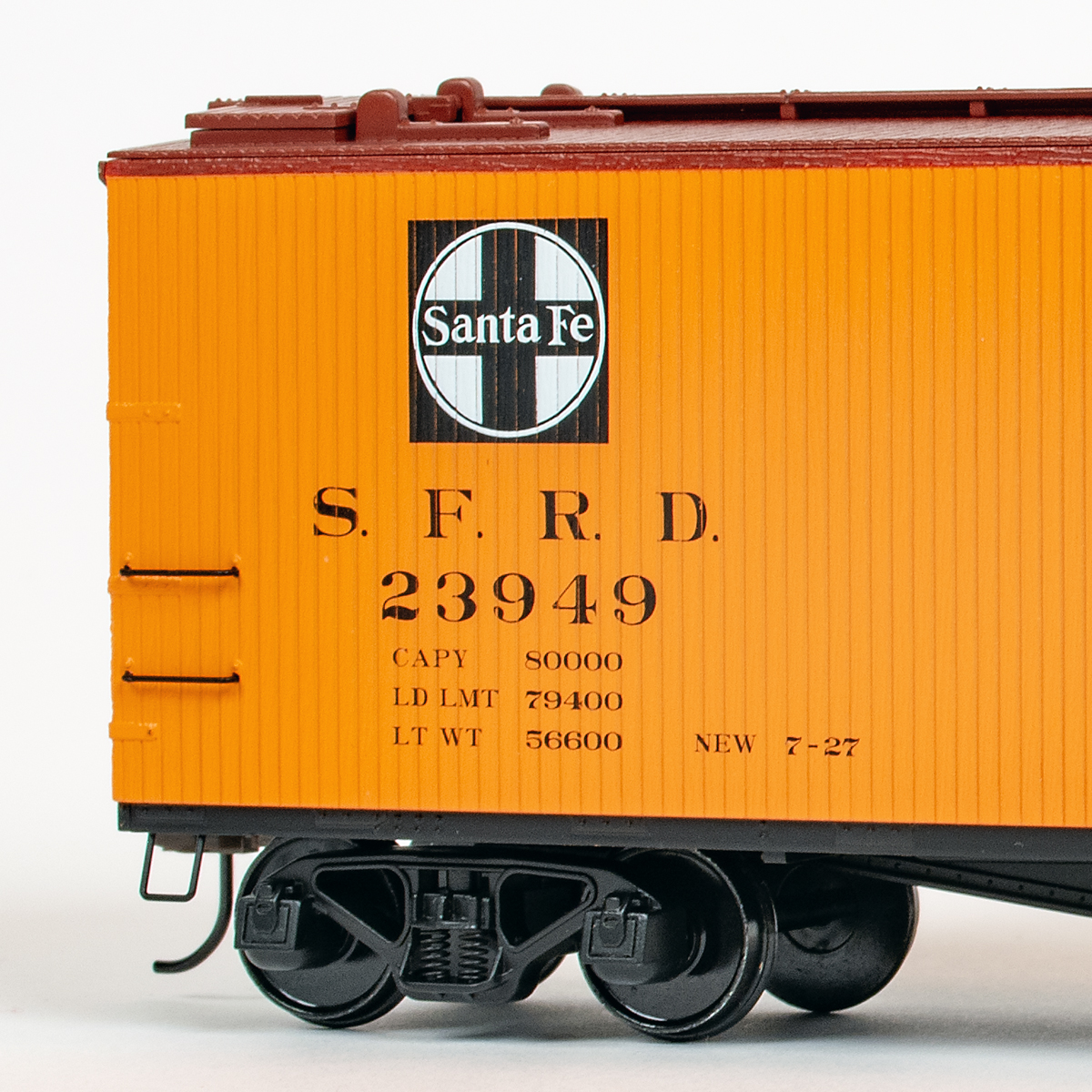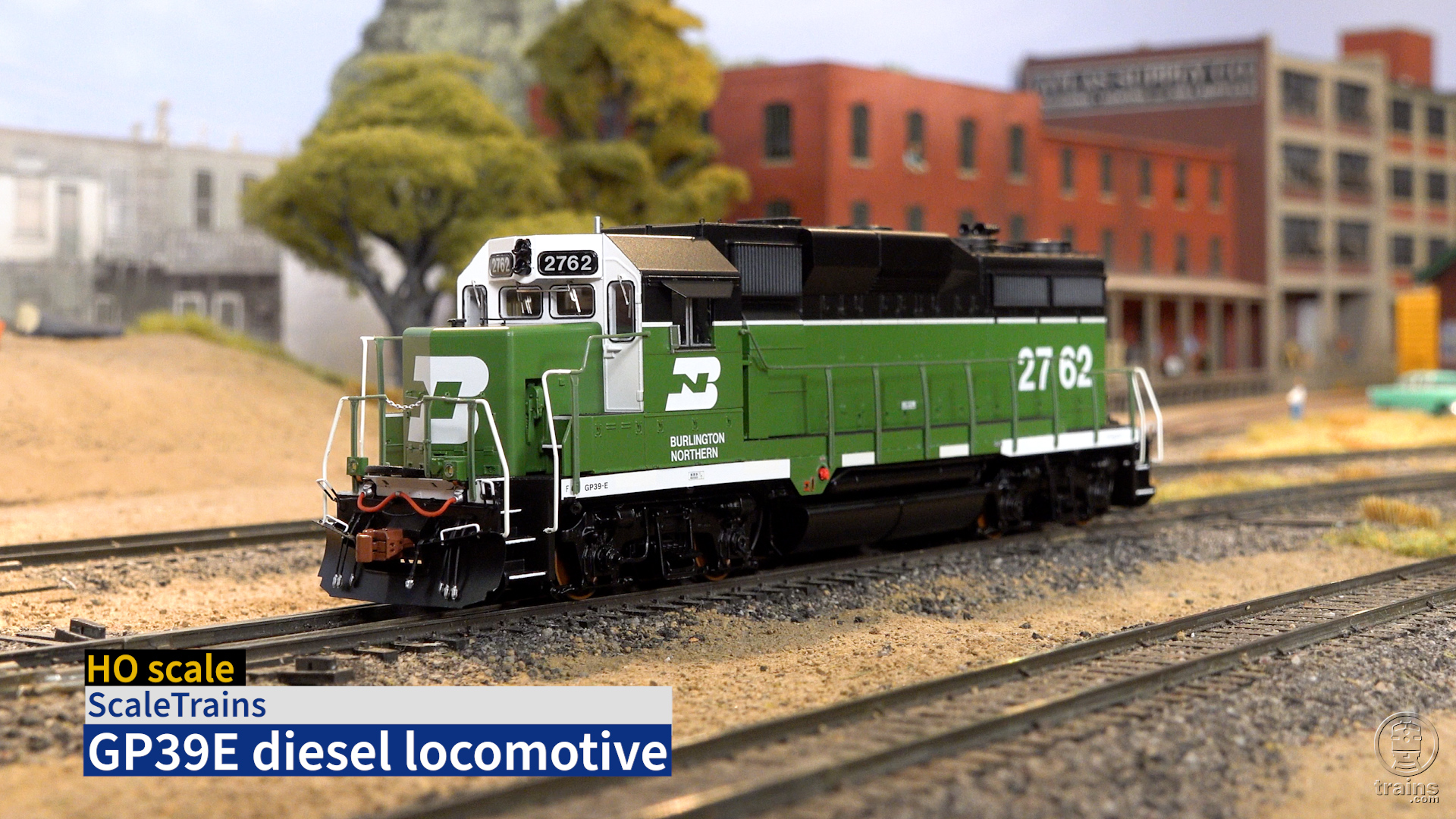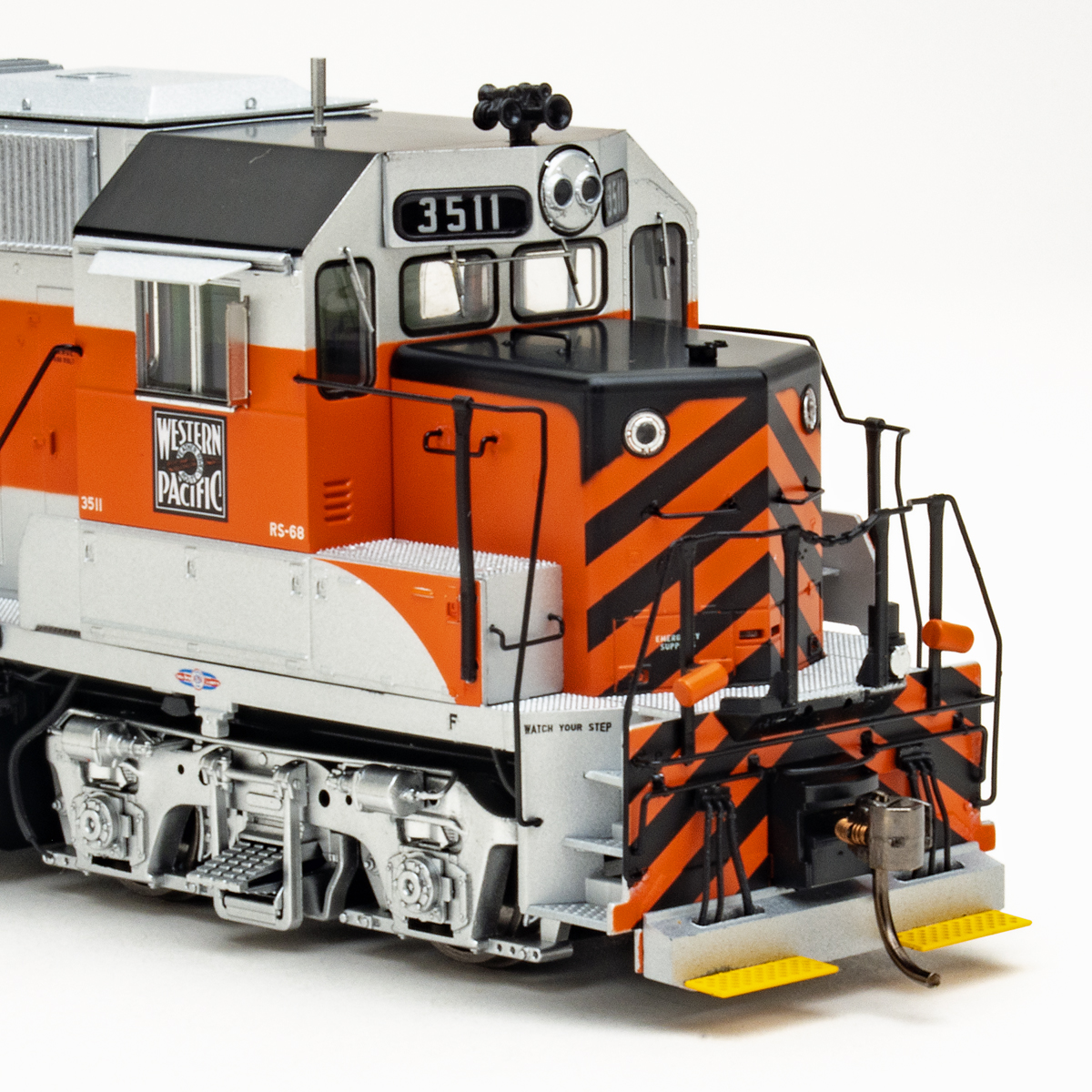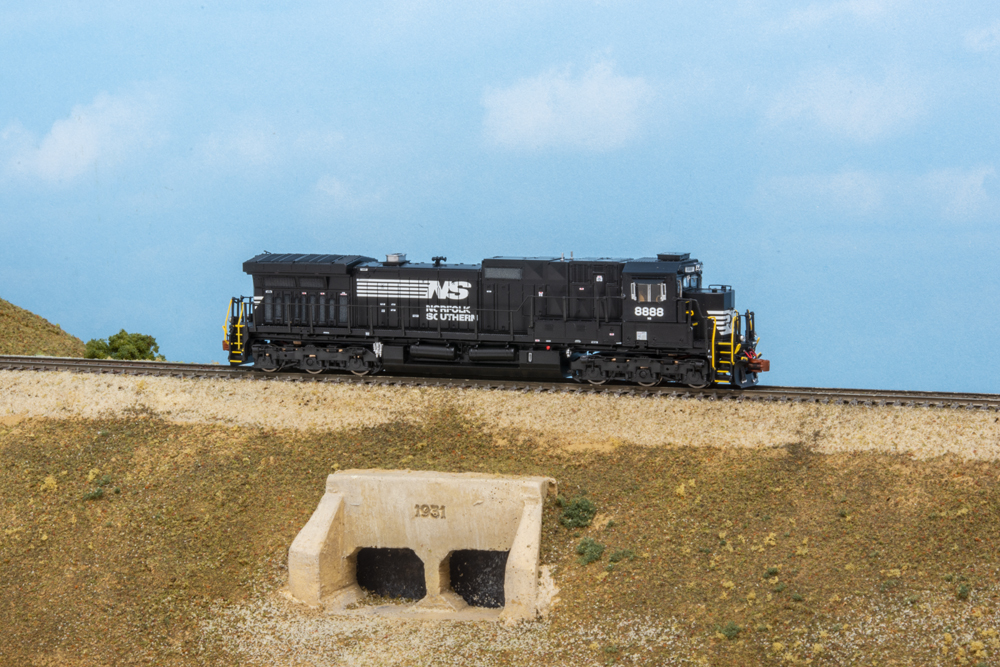
In 1995, Norfolk Southern was in the market for a modern, high-horsepower diesel to add to its roster. If you run an N scale railroad, you can do as NS did and pick up the General Electric Dash 9-40C, the latest offering from ScaleTrains.com’s high-detail Rivet Counter line. This modern six-axle workhorse is available as a direct-current model (Digital Command Control ready) or equipped with an ESU LokSound 5 Digital Command Control sound decoder.
A custom order
In 1993, General Electric sought to build on the momentum of its widely successful Dash 8 series by standardizing improvements that had been options on the Dash 8. The result was the Dash 9-44CW, also known in GE’s backwards-and-forwards nomenclature as the C44-9W. The C referred to its three-powered-axle trucks, 44 designated the locomotive’s 4,400hp engine, and W stood for wide, as in the North American Safety Cab, which had become standard on most new diesels for the continent by that time.
But as popular as the C44-9W was, at least one railroad wasn’t buying it: Norfolk Southern. That railroad put in an order for 125 new Dash 9s in late 1994, but like a fussy eater at a restaurant, NS requested substitutions. No wide cab or console control stand for us, please. Oh, and can you reduce the horsepower to 4,000? Sorry to be a trouble, but we’re trying to keep our fuel use down, thanks. And so was created the Dash 9-40C, aka the C40-9, the only Dash 9’s built with a standard cab and narrow short hood.
Though the C40-9 outwardly resembles the standard-cab C40-8, there are a few spotting features that distinguish the NS C40-9. One is the Dash 9’s bolsterless Hi-Ad trucks, visibly distinct from the Dash 8’s GSC cast trucks. The Dash 9 also has a split radiator grill, with the brake wheel centered below it on the right side. Norfolk Southern also requested a distinctive, boxy cab air conditioner to be mounted on the roof, which led NS crews to nickname these locomotives “top hats.”
Accuracy in miniature
The flared radiator housing on the General Electric Dash 9s make them some of the most distinctive diesels on the rails. The fine tooling, accurate dimensions, and numerous separately applied details of ScaleTrains.com’s N scale model do the prototype justice.
Our sample model is decorated for Norfolk Southern no. 8888, the last of NS’s order no. 338-26925, and as such the last non-wide-nose Dash 9 ever built. I compared the model to drawings of the prototype that were published in the May/June 1997 issue of Diesel Era. The number, size, and placement of grills, panels, access doors, and other details on our sample model all matched the drawings. All the major dimensions I measured with my scale rule matched, too. Prototype photos published with that article also matched up, including the placement of warning labels.
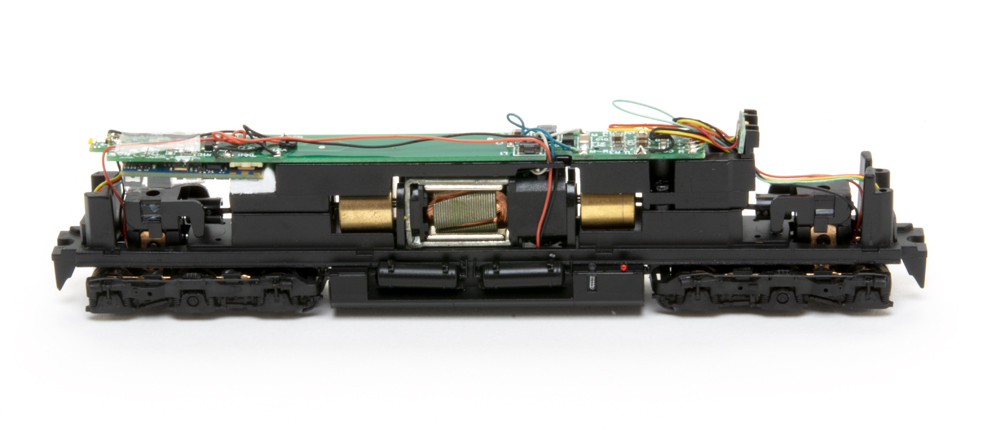
The locomotive’s black paint was smoothly and evenly applied. The white of the lettering and herald was even and opaque, though there were voids where the large NS logo crossed the long hood’s panel lines. This could be fixed with a fine paintbrush. The lettering in the warning labels on access panels and the like was not quite legible under magnification, but that’s literally a small issue.
All six blackened metal wheelsets were in gauge, and the semi-scale couplers were mounted at the right height. The rust-colored plastic couplers have no trip pins, so they don’t respond to magnetic uncouplers; you have to use an uncoupling pick. If you rely on magnetic uncoupling, the manufacturer says the locomotive’s draft gear boxes are designed to fit Micro-Trains couplers.
DCC test run
I tested the locomotive first under Digital Command Control. At first I thought the locomotive was unresponsive and subjected it to a factory reset (programming Configuration Variable 8 to a value of 8). But upon checking the manual I found the misunderstanding was mine. Unlike most sound-decoder-equipped locomotives I’ve tested, the ScaleTrains.com C40-9 doesn’t fire up its sounds immediately upon application of DCC power. Rather, the operator starts up the locomotive by pressing function key 8 (F8). This launches a prototypical, though lengthy, startup sound sequence, and – just like the prototype – the model won’t move until it’s complete. This is a feature that will be appreciated by those who have a lot of sound-equipped engines on their layout, but you can program the decoder to automatically start on power-up.
Once I’d figured out that I had to wait for the startup sequence to finish before the locomotive would roll, testing went smoothly. The engine started at speed step 1 at less than 2 scale mph, good for coupling maneuvers. At speed step 28, the locomotive topped out at 116 scale mph, a good deal faster than the prototype’s limit of 70 mph. The model’s top speed can be reduced by programming CV5 (Vmax), to a lower value. A setting of 90 produced a more prototypical top speed of 66 scale mph.
I was impressed with the working ditch lights, front and rear. Years ago this kind of feature was seen only on HO scale locomotives and larger, but light-emitting diodes are getting smaller all the time. They can be turned on and off separately from the headlights using F6, and when on, they flash alternately when the horn is sounded. Pretty cool.
The sound recordings were realistic, despite the small speaker that’s required to fit into an N scale model. I liked the Nathan AirChime K-5LA-R24 horn. If you want a different sound set, 11 different horns and 10 bells are available in the decoder. You can even choose alternate sounds for the brake squeal and air dryer! The volume of individual sounds can be programmed, as well.
More testing
The ESU LokSound 5 DCC decoder is dual-mode, meaning it will run under DCC control or direct current, so I also tested it on DC. Though I expect sound decoders to take a lot of voltage to get going, leaving only a small portion of the power pack’s operating range for speed control, I was presently surprised. The diesel’s startup sequence came on at just 5.5V. It started moving at 7V, rolling at just .7 scale mph. It sped up rather quickly, reaching 129 scale mph at 12V, which wasn’t even the top end of our power pack.
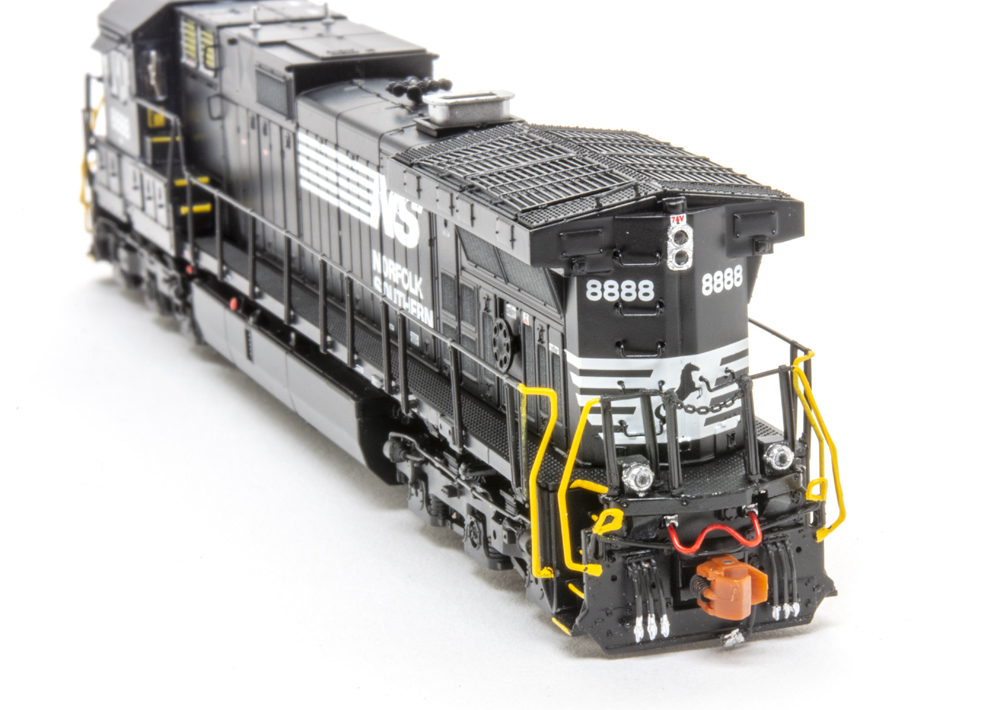
Although I couldn’t control the sounds directly in DC mode, the startup sequence and motor sounds played automatically, and the lights switched with the direction of travel. I liked the slight wheel squeal that sounded when bringing the speed down to 0 scale mph.
While I had the DC power pack hooked up, I got out the test bench force meter. At full voltage, the little locomotive mustered almost an ounce of drawbar pull, equivalent to a train of 23 free-rolling N scale freight cars.
Finally, I took the locomotive and a box full of N scale freight cars to our Canadian Canyons project railroad for a real-world test. The diesel had no problem leading a 10-car train up and down the 1.9 percent grade in the helix and through the layout’s 13″ radius curves and Peco medium radius turnouts.
A tip of the hat to ScaleTrains.com
General Electric’s Dash 9 series was one of the most successful designs of its day, with almost 5,000 built. Of those, the 125 standard-cab versions built for the Norfolk Southern stand out. ScaleTrains.com has successfully captured this distinctive locomotive in N scale. No longer must NS modelers resort to kitbashing. Thanks, ScaleTrains.com!
Facts & features
Price: $174.99 (direct current, DCC ready); $294.99 (ESU LokSound 5 DCC sound decoder equipped)
Manufacturer
ScaleTrains.com
7598 Highway 411 Benton, TN 37307
scaletrains.com
Era: 1995 to mid-2010s
Road names: Norfolk Southern (as-delivered scheme, six road numbers).
Features
– All-wheel drive and electrical pickup
– Detailed cab interior
– Dual-mode ESU LokSound 5 sound decoder with stay-alive capacitors (DCC models) or 21-pin decoder socket (DC models)
– Early or late dynamic brake exhaust, as appropriate
– Etched-metal grills
– Five-pole, skew-wound motor with dual flywheels
– Lighted number boxes
– Light-emitting-diode lighting
– Minimum radius: 93⁄4″ (11″ recommended)
– Semi-scale knuckle couplers
– Separately applied air horn, brake wheel, firecracker antennas, and other details
– Weight: 3.7 ounces
– Wire grab irons
– Working front and rear ditch lights







